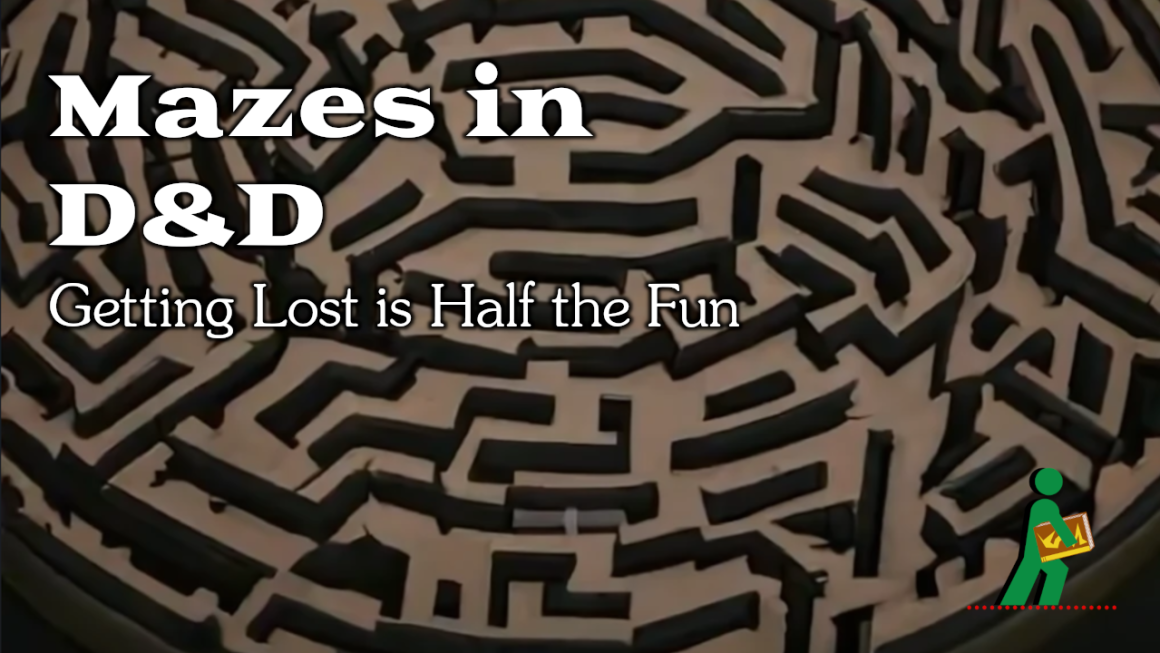
Mazes in D&D | Getting Lost is Half the Fun | Wandering DMs S05 E26

Join Dan and Paul as they discuss the use of mazes in D&D adventures! They will explore the twists and turns of these navigation puzzles, and try to discover the line between captivating challenges and maddening exercises in frustration.
The word maze is used to refer both to branching tour puzzles through which the solver must find a route, and to simpler non-branching (“unicursal”) patterns that lead unambiguously through a convoluted layout to a goal. The pathways and walls in a maze are typically fixed, but puzzles in which the walls and paths can change during the game are also categorised as mazes or tour puzzles.
Some maze solving methods are designed to be used inside the maze by a traveler with no prior knowledge of the maze, whereas others are designed to be used by a person or computer program that can see the whole maze at once. Mazes containing no loops are known as “standard”, or “perfect” mazes, and are equivalent to a tree in graph theory. Thus many maze solving algorithms are closely related to graph theory. Intuitively, if one pulled and stretched out the paths in the maze in the proper way, the result could be made to resemble a tree.
This description uses material from the Wikipedia article “Maze“, which is released under the Creative Commons Attribution-Share-Alike License 3.0.

